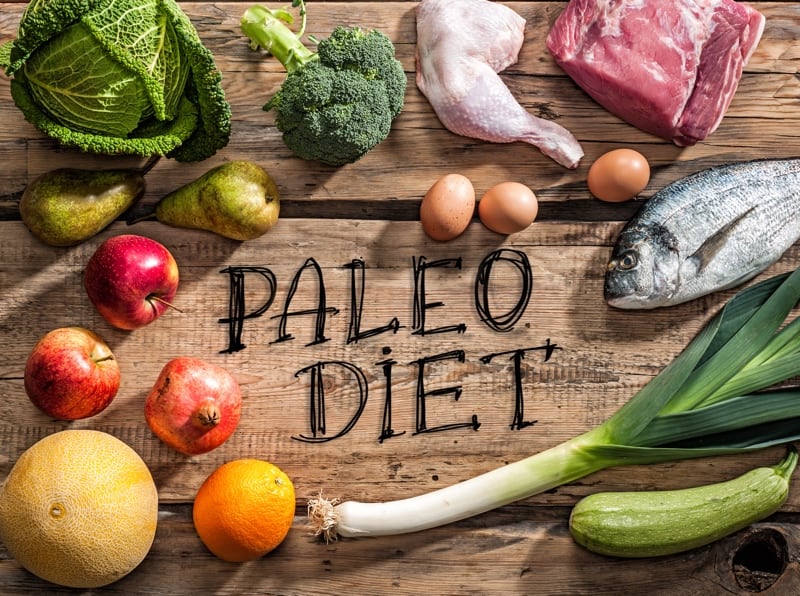Hello Paleo: An Overview of the Paleo Diet

Foundations of Paleo
- Fruits
- Vegetables
- Nuts and seeds
- Lean meats, with a focus on grass-fed animals and wild game
- Fish, with a focus on those high in omega-3 fatty acids [salmon, albacore tuna]
- Oils from fruits and nuts [olive oil, walnut oil]
Foods typically excluded from a paleo diet:
- Grains [wheat, oats, barley]
- Legumes [beans, lentils, peanuts, peas]
- Dairy products
- Refined sugar
- Salt
- Potatoes
- Highly processed foods in general
How Does It Measure Up?
There are clinical trials comparing the Paleo Diet to other eating patterns such as the Mediterranean Diet or the Diabetes Diet. These trials suggest that a paleo diet may provide some benefits when compared to other diets including fruits, vegetables, lean meats, whole grains, legumes, and low-fat dairy products.
It should be noted, there is still a long way to go in terms of studying the Paleo Diet and its effects long-term. More trials with larger groups and other contrasting diets to compare to will be helpful in understanding overall health benefits and any possible risks.
Get A Taste For Paleo
As previously stated, there are many products at our fingertips now that announce they are paleo-friendly right on the label. We recommend locally-made Steve’s PaleoGoods grainless granola bars or Paleo Ranch bacon jerky– both companies that give a portion of their proceeds back to the community!
References:
The Mayo Clinic, What is it and why is it so popular?
Harvard School of Public Health, Diet Review: Paleo Diet
